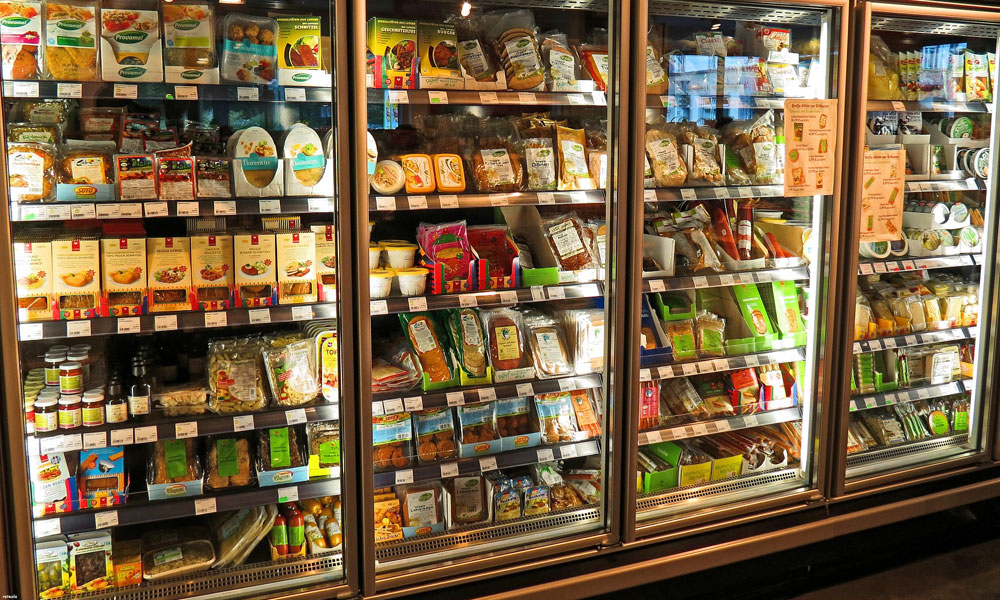By Shane Kavanagh, Consulting Director at Stellar
I’m a proud Kiwi, and one thing I especially love is the ingenuity and the “number 8 wire” mentality embedded in our social and entrepreneurial DNA. Because of our relatively small population, we have the ability to be agile and get things up and running to a smaller set of early adopters.
So it surprises me that, when I walk around the supermarket, I still see paper-based pricing. Surely this perpetuates the need for humans to manually update prices shelf-by-shelf.
What’s worse, in a customer-centric market, the customer can look at a ticket, think it’s a reasonable price, but then get another price at the checkout. They then have to raise a concern, which prompts another human to wander down the aisle and check the price, only to return and declare: “Yip, the customer is right.”
Worse still is if the customer has chosen the “convenience” of self-checkouts. In this case, we have to add in the time for an attendant to appear, and another human to wander down the aisle and check the price, only to return and declare: “Yip, the customer is right.”
Electronic Shelf Pricing is long overdue
In iOS 11, you can scan and interact with QR codes natively, so no need to download a separate app. This addition to one of the world’s most popular smartphones is entirely demand-driven; QR readers allow product designers, manufacturers and retailers to digitally update details on products with the push of one centrally-held master data record.
Imagine a retailer who lets consumers point their smartphone at the QR code in-store to get a price. Now imagine that retailer has a loyalty program app that knows the customer’s loyalty status and then gives them a customised price based on that status.
In these times of in-memory, fast and cheap CPU scalability and processing, what is holding back the supermarkets? We know it’s not the technology.
Pricer, a company founded in 1991 in Sweden, offers the most complete and scalable Electronic Shelf Labelling (ESL) solutions. Pricer has 13,000 installations in over 200 retailers – more than 100 million ESLs installed in 51 countries.
Fresh Choice Nelson was the first New Zealand supermarket to adopt the ESL price labels back in 2010 (nearly 20 years after Pricer started) and the Fresh Choice franchiser is rolling this option out to its stores. But why don’t we see this more and more?
The following was relatively big news in December 2016 – 25 years after Pricer was formed!
First Supermarket in New Zealand to install three colour labels throughout!
Three-colour labels have finally arrived and been installed in the Brand New Pak N Save Tamatea store based in the Hawke’s Bay! Pak N Save chose to show all Extra Low, Pam and Value products were on sale with the red screen as it draws the customer’s attention to the label.
– electronicshelflabelling.co.nz
What can we learn from the rest of the world?
If I were a technologist in an Australasian supermarket chain, I’d be looking over my shoulder at Amazon in particular. They price according to consumer demand and as such, it takes Amazon just two minutes to make a price change, compared with 43,000 minutes (just under a month) for a US e-commerce site, according to retail pricing technology firm Intelligence Node.
And the US offline market averages 270 days to make the change, a sluggishness that is costing retailers’ sales.
Amazon is a master at “dynamic pricing” that’s powered by its proprietary algorithms. This born-in-the-web technology enables retailers to re-price thousands of items based on consumer demand, buying behaviour, competitors’ pricing, and market factors.
And it’s granted Amazon an edge over legacy retailers, which largely still rely on manual and intuitive—rather than data-driven—pricing strategies that predate the era of price transparency, whereby shoppers can compare the cost of almost any product in seconds from their smartphones.
In the US for example, Coca-Cola has been using Google’s cloud platform to send videos and discount coupons to customers’ smartphones in Albertsons grocery stores. Albertsons is using the power of the cloud to bring a real-time, media-rich experience to shoppers in the store.
Also consider one of Britain’s largest supermarket chains, Sainsbury’s. They have massive scale and reach and have trialled “Mobile Scan & Go” which lets shoppers scan their shopping on a smartphone, pack purchases as they go, keep a running total of exactly how much they’ve spent (and how much they’ve saved) and then scan their credit card and leave the store.
Sainsbury’s says it ran the Scan & Go electronic pricing trial two years ago while Morrisons and Tesco are each currently trying out the system in one store each. They all say that the aim behind these schemes isn’t to bring in dynamic pricing – but they don’t deny that it will make switching between prices easier.
Displaydata, one of the world’s leading suppliers of electronic shelf labels, confirms that electronic pricing’s newfound popularity in the UK has transformed their Berkshire-based business.
Chief executive Andrew Dark says: “It’s fascinating for us because up until the last 12 months we have been a UK company that was effectively a 100% exporter.”
Mr Dark estimates that if the technology were implemented in every store, 10 million prices could be changed within 24 seconds, not only speeding up the process but helping to cut food waste and making pricing more accurate.
How retailers can improve the customer experience and their bottom line
In summary, I’d like to see my supermarket make better use of data so that they can offer:
- Customer-centric pricing, e.g. through a loyalty application on a smartphone.
- Personalised and location-based marketing campaigns like the Coca-Cola example mentioned above (you should check it out; they even show where the Coke is on sale).
- Surge pricing throughout the day especially for perishable goods such as fresh fruit, vegetables and meat. This might be a means of reducing food waste and a better way to mark down prices than those large “reduced” stickers that get placed over the barcodes today.
- An end to paper-based, error-ridden pricing and that awful moment at the checkout where you have to question a price – and everyone behind you sighs in disbelief.
- A customer checks to see if products are in stock without having to ask someone from the store (who inevitably disappears for an inordinate amount of time) only for them to return with blue bath salts and not the Salt Of The Earth Ceramic Salt Grinder with Salt that you had asked them about.
To satisfy the requirements I listed above means retailers will need accurate and complete master data, a robust road map for data and analytics and an understanding of the most effective strategy for their situation (e.g. customer-centric, price-centric or product-centric marketing).
Stellar consultants are experts at helping businesses optimise their operations through the effective use of data and analytics capability. As vendor-agnostic business intelligence consultants, we work at the strategic level, right through to implementation using the most appropriate platform (e.g. Amazon Web Services, Domo, Google Analytics and Microsoft Azure).
Find out more by contacting Stellar today.
As an aside, I think that $23 sea salt in the fifth point above might just be the best example in a long time of charging for a product that is free to anyone who wants to go and get it. Even better than bottling Auckland’s tap water and charging us $3 for the privilege. 🙂




